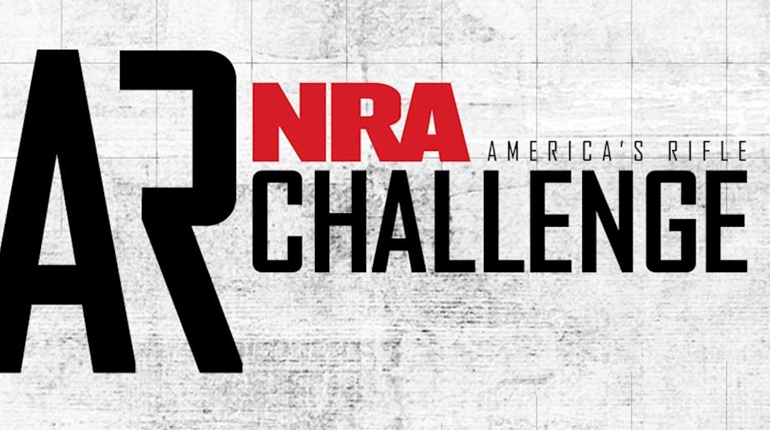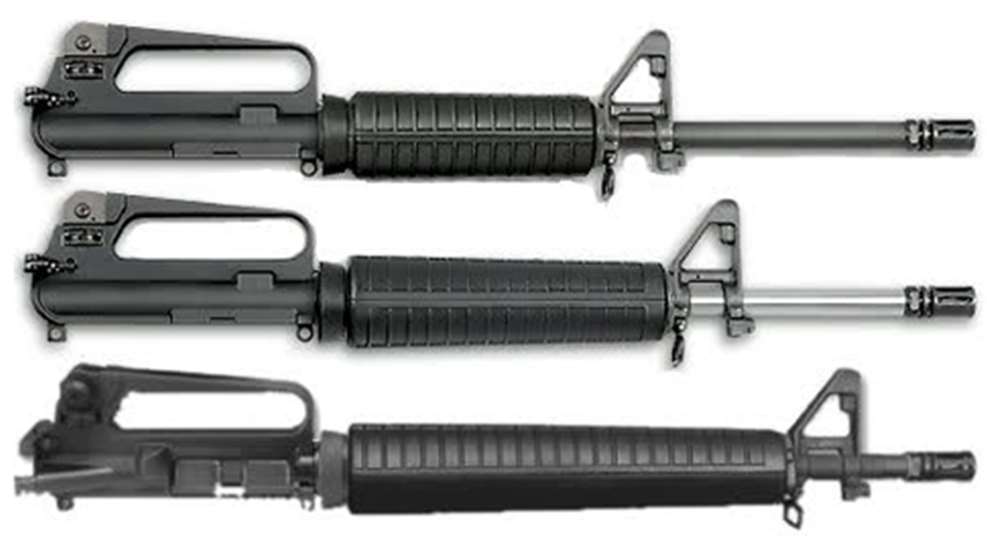
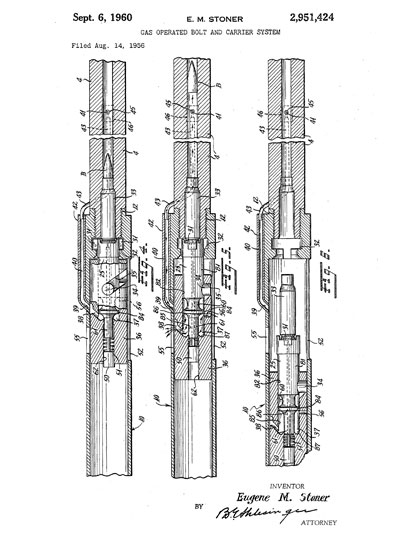
The traditional DGI system also incorporates a piston into the design. The bolt does double duty here, locking the breech during firing and serving as a fixed piston, while the bolt carrier also wears a second hat as a sliding piston sleeve. Interestingly, Eugene Stoner's original patent for a "Gas Operated Bolt and Carrier System" actually refers to DGI as a "gas-expansion" system, and specifically contrasts it to "the conventional impinging gas system," because as gas fills the bolt carrier, it expands, pushing against the rear, or "trumpet" area, of the bolt. That force holds it closed long enough for chamber pressure to drop to a safe opening level while pushing the bolt carrier rearward to start the cycle of operation. So, rather than gas hitting the end of a piston to move it, the DGI system uses gas to move the piston sleeve away from the piston. Rather than arguing semantics by insisting we call this a gas-expansion system, I will stick with DGI here for simplicity's sake. Like the numerous op-rod designs, DGI has its own variations in the AR platform by virtue of different gas-system lengths.
Stoner's patent lists a number of reasons for the technology used in the original DGI operating system, including less weight and cost, ease of manufacture, reduced sensitivity to varying propellant charges and longer component life compared with the full-automatic rifle mechanisms in use at that time. Whether or not his design succeeded is still hotly debated in some circles. Speaking as a guy who carried various ARs—DGI and op-rod—during 22 years of uniformed service, I think he did a good job of providing us with a lightweight, durable, shoulder-fired weapon system. I had ample opportunities to pick up all manner of weapons on battlefields around the world. Yet, with the exception of occasional special-purpose weapon needs, I never shelved my M16, M4 or SR-25 variant in favor of another operating system. Whenever asked about the DGI system's suitability for life-or-death scenarios, I give the same answer as I do for all firearms: Take care of the gun, and it will take care of you.
None of this is to say the DGI system is perfect. One area where Stoner's aims initially missed the mark was in making the DGI tolerant of varying-propellant charges. While the metered-gas design largely protects against too much gas getting inside the carrier, too little gas or excessive fouling can wreak havoc on reliability. A poorly timed and terribly executed change to the original 5.56 NATO powder load occurred between the testing and fielding of the first widely issued M16s in Vietnam. The results were tragic for American troops in the heat of battle and were further complicated by a lack of maintenance training and equipping at the time. Once identified, the problems were fixed, but they underscored the fact that changing even one seemingly small component affects the rest of a well-tuned system.
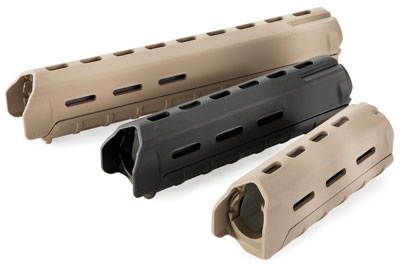
Totally Tubular
The DGI family's most common gas-tube lengths are carbine, mid and rifle. Actual sizes vary slightly, but the gas tubes used are typically 9.75, 11.75 and 15 inches long, respectively. There are some oddball gas-system lengths out there, too, such as very short ones used for pistols and longer proprietary lengths used by specific manufacturers. This measurement is often confused with forearm or free-float-tube lengths, which are also referred to as carbine (7 inches), mid (9 to 10 inches) and rifle (12 inches), describing the actual lengths. Gas-system and fore-end lengths do not have to match in every case, but some configurations will mandate they are the same. For instance, a standard "M4"-profile AR that uses a carbine-length gas system and fixed front sight assembly/gas block must either use a carbine-length fore-end (due to the front sight sticking up) or a longer free-float tube with a cutout for the front sight. While you could feasibly have a carbine-length fore-end installed over a rifle-length gas tube, the resulting uncovered inches of gas tube would be very susceptible to damage, leading to system malfunction.
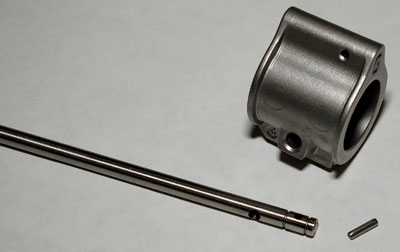
Free-floating an AR's barrel is a popular option to aid accuracy, cooling, modularity and ergonomics. Low-profile gas blocks are equally common and allow long fore-ends to be used over shorter gas systems. If you are retrofitting an existing AR without rebarreling it, you do not have the option of changing the gas system's length. But if you are building an AR from scratch, ordering a custom build or selecting a new barrel, you have more say. There is no hard-and-fast rule for using gas-tube length "A" for purpose "B," but some general guidelines exist.
The current consensus is, all else being equal, a longer gas system is better. How much better and for what, depends on to whom you are talking. I have heard longer gas-system lengths reduce felt recoil, muzzle climb, heat in the action, fouling, bolt-carrier speeds, DMV wait times, ozone levels, bad cholesterol and premature hair loss. It may help to understand how varying pressures affect the DGI system to see the advantages of different gas-tube lengths.
Warning! Science Content
As used in internal firearms ballistics, pressure is the thrust of gas (force) created by primer and powder ignitions. It acts against the case walls, bullet, chamber, bolt face and barrel and is what eventually pushes the bullet down the bore. Colliding gas molecules (released by the rapid burning of propellant) generate the increasing pressure. The smaller the volume, the more molecular collisions occur and the higher the pressures are at a given temperature. Conversely, increasing volume results in less molecular collision and less pressure, especially once the system is "uncorked."
In human terms, it is similar to the way your blood pressure rises when you are stuck on the runway, inside a small plane while someone shares their end of a phone conversation with everyone else on board. As soon as the door opens, passengers begin moving into a larger space and your blood pressure drops quickly. As a cartridge's primer sets the firearm version of this chain reaction in motion, the initial speed of gas expansion is faster than the bullet can move, causing the maximum pressure to be reached in the first inch or two of projectile travel. Factors contributing to peak pressure include the type and amount of powder, bullet weight and design, seating depth, primer type and seating, cartridge design and internal capacity, neck tension, crimping, weather, chamber condition and dimensions, bore size in relation to bullet diameter and bore condition. I am sure I missed a few, but you get the idea.
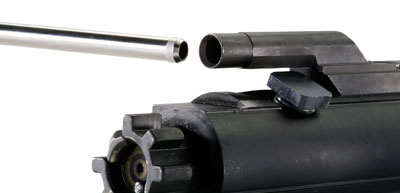
Different gas-system lengths come into play as bullets move down their barrels, reducing the pressure behind them. A longer gas tube corresponds to a gas port placed farther down the barrel (toward the muzzle), yielding lower port pressures, since there is more room for the expanding gases behind the bullet as it passes the gas port. Once the bullet leaves the muzzle, pressure drops off. Therefore, a gas port closer to the muzzle reduces the amount of time that highly pressurized gas has to act on the operating system after the bullet passes the port, usually referred to as "dwell time." When comparing two barrels of equal length—but with different gas systems—the longer gas tube will produce a reduced dwell time. The practical results are usually slower bolt-carrier movement and a slight reduction in felt recoil. The latter facet is quite apparent to someshooters but can go completely unnoticed by others. I regularly shoot all three gas-system lengths, and I can feel the difference in otherwise-like barrels.
Ports of Call
You may wonder why, if shorter dwell times are such an advantage, gas ports are not placed directly behind the muzzle. The answer is pretty straightforward: Malfunction rates increase dramatically if the gas port is too close to the muzzle. DGI ARs need some of the expanding gas that remains after the projectile passes the gas port to help operate the system. Standard 20-inch-barreled AR-15s and M16s use rifle-length gas systems. The M4 and CAR-15 families use the carbine-length system.
Carbine-length systems obviously allow for shorter barrel lengths, but they come with some shortcomings. As noted, port pressures are generally higher with the shorter gas system. A smaller gas-port size is typically used to reduce the amount of gas that gets into the operating system before the carrier moves rearward, disengaging from the gas tube. Most people notice a carbine-length gas system is a little "snappier" recoiling, but the difference between it and longer lengths is not huge when firing light-recoiling calibers. In my opinion, the carbine-length system's best use is on short barreled rifles (SBRs) where barrel lengths are less than 16 inches—like the standard-issue length of 14.5 inches in current military carbines. Mid-length gas systems are a great option that started growing in popularity around 2009. I prefer to use them on 16-inch and some 18-inch barrels, and reserve rifle-length gas systems for 18-inch and longer barrels. I generally try to plan the AR's fore-end, gas block and front-sight configurations around the gas system instead of the reverse. Function beats form every time.
Problem Solving
Those generalizations do not mean you need to rebarrel your AR just because you have a carbine-length gas system on a 16-inch barrel. Most off-the-shelf carbines use the shorter gas system without any ill effects. If your AR functions reliably and you are happy with accuracy, there is no need to change a thing. Conversely, if you have performance problems, your gas system may not be meshing well with the rest of the gun's setup. Fortunately a few simple troubleshooting tips may remedy the problem without requiring a complete barrel change.
First, be sure you are using known-quality ammunition your firearm has previously digested well. Second, always have enough magazines on hand to rule out a problem with this critical and seemingly disposable component. Next, verify the gaps on your bolt's gas rings are intact and the gaps are misaligned. If they line up, enough gas can sneak through to cause malfunctions. Simply rotate the rings to offset the gaps. Likewise, check to be sure the rings are not worn to the point that gas escapes around them. A spare set of gas rings costs a few dollars and can be kept in a pistol grip's hollow compartment. You should feel resistance when you move the bolt back and forth inside the bolt carrier. If it moves freely from gravity alone, replace the rings. Check to ensure the bolt carrier's key is still tightly affixed to the top of the carrier. If either screw is broken or has worked loose, gas can escape and lower system pressure enough to cause malfunctions.
If the end of the gas tube is not straight and centered where it protrudes into the upper receiver, interference between it and the carrier key may impede smooth operation. This condition does not normally develop on its own and will show up early in an AR's life. The common causes are improper alignment of the gas block or barrel nut, or a bent gas tube. A less-common cause could be damage to the bolt carrier's key. You can check this alignment by inserting a stripped bolt carrier and charging handle into the upper. Slowly move the carrier forward and back, feeling for any hang-ups. You may feel a slight bump as the carrier key and gas tube end meet, but there should be no hard stopping point or increase in tension as the carrier goes fully forward. Fixes to this problem require realigning the barrel nut or gas block and/or slight tweaking of the gas tube's bends. Beware of coated gas tubes—I bought a handful of nifty-looking black ones with a proprietary coating that turned out to be too tight in the bolt-carrier key. I found removing the coating from the first inch of each gas tube'sopen end with a wire wheel reduced the friction and allowed them to work correctly.
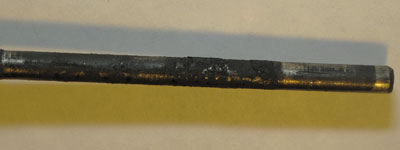
Gas blocks may also be the pressure-loss culprit. Verify any setscrews or through-bolts are tight and the gas block is not canted or loose. Also, check to be sure the roll pin securing the front of the gas tube inside the gas block is present. If this pin disappears, the rifle will cease cycling as soon as the gas tube moves out of place. A quick field fix is to ensure the gas-tube-pin hole and gas-block hole are aligned, then slide a small hex key or a piece of stiff wire through the hole and bend it so it stays in place. On very rare occasions, a gas tube will fracture at the roll-pin hole. When that happens, the tube must be replaced. The broken end of the gas tube will also need to be extracted from the gas block. Finally, it doesn't hurt to clean your gas tube from time to time. I use long pipe cleaners and bore solvent to remove inner residue and wipe or scrape excess carbon off the outside where it is exposed in the upper receiver.
If everything else checks out, but too much or too little pressure is wreaking havoc on an AR's timing, adjusting the amount and rate at which gas enters the operating system is a good way to get it back in tune. I am a huge fan of adjustable gas blocks, particularly those that do not require tools to change settings or come out of adjustment through firing. However, good adjustable blocks can run $150 or more and often require installation help involving a gunsmith. Other options to tweak the gun's timing include changing buffer weights, buffer springs and bolt-carrier weights. Keep in mind, these retrofits are really just Band-Aid approaches and do not eliminate the causes of pressure problems—it's better to find out the source of the problem and fix it directly.
The simple things in life are often the least troublesome. The original AR's fixed stock, standard buffer and rifle-length gas configuration are no exceptions. Stoner's basic design shoots very smoothly and without much trouble. But, our thirst for practical customization dictates that today's AR rifles and carbines use a wide variety of gas-system lengths and buttstock/buffer configurations. Most of us learned a watered-down version of Newton's Third Law of Motion: For every action, there is an equal and opposite reaction. When one component of an AR's operating system is changed, the net result may be negative because of the downstream effects on other components. Choosing the right gas system for your rifle, carbine or pistol will go a long way toward ensuring the AR successfully demonstrates the other laws of motion while sending rounds downrange.










